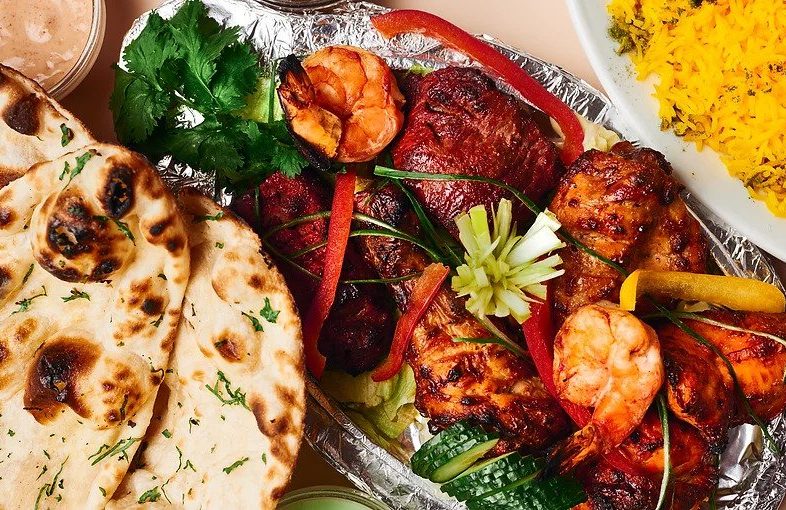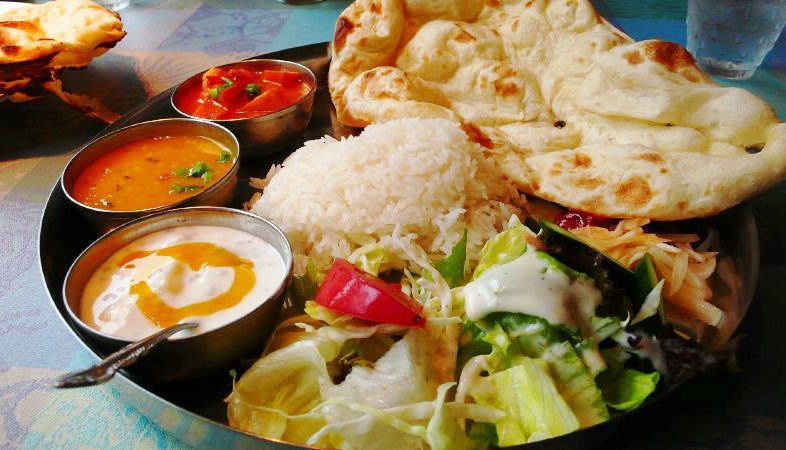One of the most exciting aspects of moving to a new country is the opportunity to experience a different food culture. As an Indian immigrant in Germany, you may find yourself missing the familiar flavors of home or struggling to find Indian ingredients in your local grocery store. However, with a little bit of exploration and experimentation, you can discover a whole new world of delicious and unique culinary delights.
German food culture is known for its hearty and comforting dishes, such as sausages, stews, and potatoes. While these foods may seem quite different from the spicy and complex flavors of Indian cuisine, there are actually many similarities and opportunities for cross-cultural culinary fusion. For example, many German dishes incorporate pickled or fermented ingredients, such as sauerkraut and pickles, which can be a great complement to the bold flavors of Indian spices.
One of the most popular street foods in Germany is the currywurst, a grilled or fried sausage smothered in a sweet and spicy tomato-based sauce and sprinkled with curry powder. While this dish may not be authentically Indian, it is a testament to the country’s love of bold and flavorful sauces. As an Indian immigrant, you may find that adding a dash of your favorite spice blend to a traditional German dish can give it a whole new dimension of flavor.
Another way to experience German food culture as an Indian immigrant is to explore the country’s bakeries and pastry shops. Germany is known for its delicious breads, pastries, and cakes, many of which are made with wholesome ingredients such as whole wheat flour and nuts. While these treats may not be the sweet and decadent desserts that you are used to in India, they can still be a satisfying and indulgent treat. Some popular German pastries to try include the Berliner, a jam-filled donut, and the Apfelstrudel, a flaky pastry filled with apples and cinnamon.
Of course, one of the biggest challenges of being an Indian immigrant in Germany is finding ingredients to cook your favorite Indian dishes at home. While many German cities have ethnic grocery stores that cater to immigrant communities, these stores may be few and far between, and may not carry all the spices and ingredients that you need. However, with a little bit of resourcefulness and creativity, you can still recreate your favorite Indian dishes using local ingredients.
One solution is to substitute German ingredients for Indian ones where possible. For example, if you can’t find fresh curry leaves, you can use dried bay leaves instead. If you can’t find ghee, you can use clarified butter or coconut oil. Additionally, many basic Indian spice blends, such as garam masala and cumin powder, are available at most grocery stores and can be used to add flavor to a variety of dishes.
Another option is to get creative with your cooking techniques. For example, if you can’t find paneer cheese, you can make your own by boiling milk and adding lemon juice or vinegar to create curds. Or, if you can’t find tamarind paste for your favorite chutney, you can use lemon juice and sugar instead. By experimenting with different techniques and ingredients, you can create new and exciting twists on traditional Indian dishes that are uniquely suited to your German kitchen.
In addition to exploring German food culture and adapting your favorite Indian recipes to local ingredients, you may also want to try new and unfamiliar dishes that are popular in Germany. This can be a great way to expand your palate and discover new favorite foods. Some popular German dishes to try include schnitzel, a breaded and fried cutlet of meat, and sp�tzle, a type of soft egg noodle that is often served with cheese or creamy sauces. You may also want to try regional specialties, such as the hearty sausages of Bavaria or the fresh seafood of the North Sea.
If you’re feeling adventurous, you can also try your hand at making your own German dishes at home. Many traditional German dishes are relatively simple to make, with a focus on wholesome and comforting ingredients. For example, you can try making your own spaetzle noodles from scratch or cooking up a pot of sauerkraut with sausage and potatoes. By learning to cook German dishes, you can gain a deeper appreciation for the country’s food culture and connect with local traditions.
Of course, one of the most enjoyable aspects of experiencing food culture as an Indian immigrant in Germany is sharing meals with friends and family. Whether you’re hosting a dinner party with German and Indian dishes or sampling street food at a local festival, food can be a powerful way to connect with others and build relationships. By sharing your own culinary traditions and learning about others, you can create a rich and diverse tapestry of food culture that reflects the unique experiences of being an expat in Germany.
By exploring local foods, adapting your favorite Indian dishes to local ingredients, and trying new and unfamiliar dishes, you can discover a whole new world of culinary delights. Whether you’re cooking at home, dining out, or sharing meals with friends and family, food can be a powerful way to connect with others and build community. So go ahead, try that currywurst or schnitzel, and discover the delicious intersection of German and Indian cuisine.












Add Comment